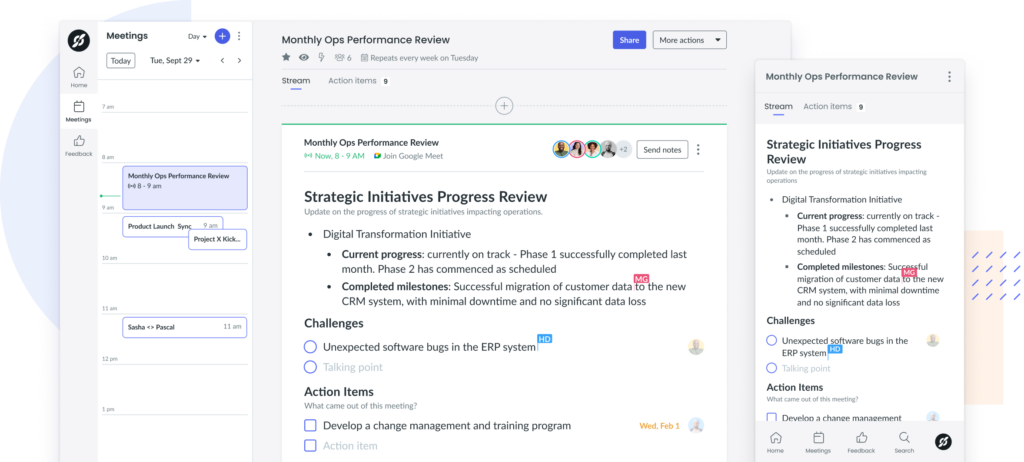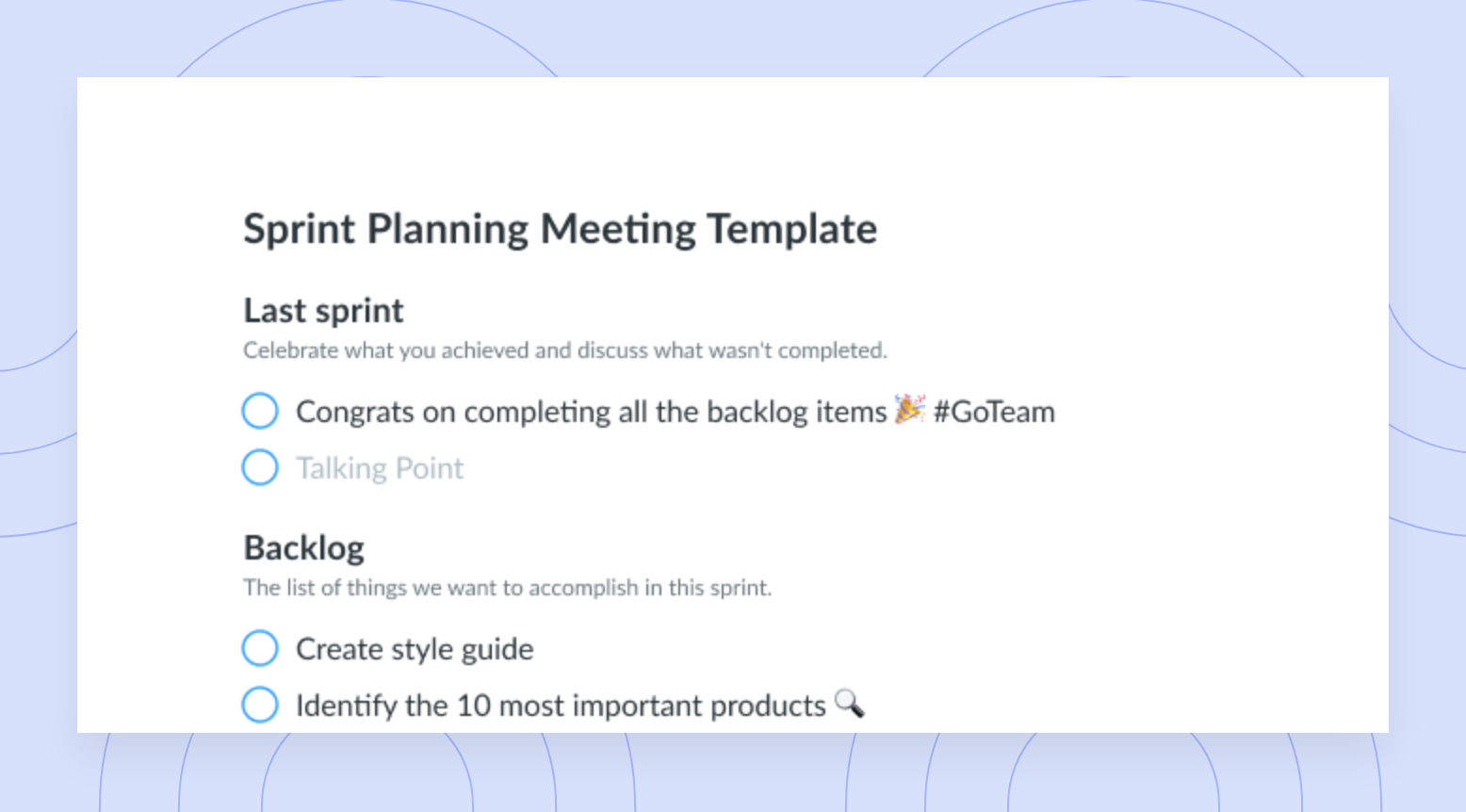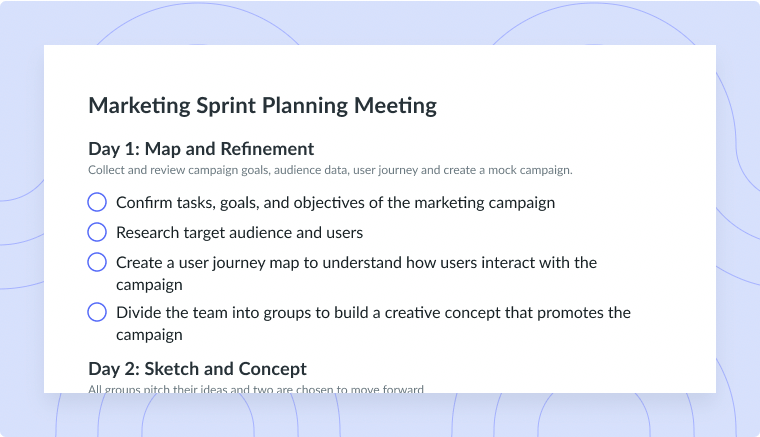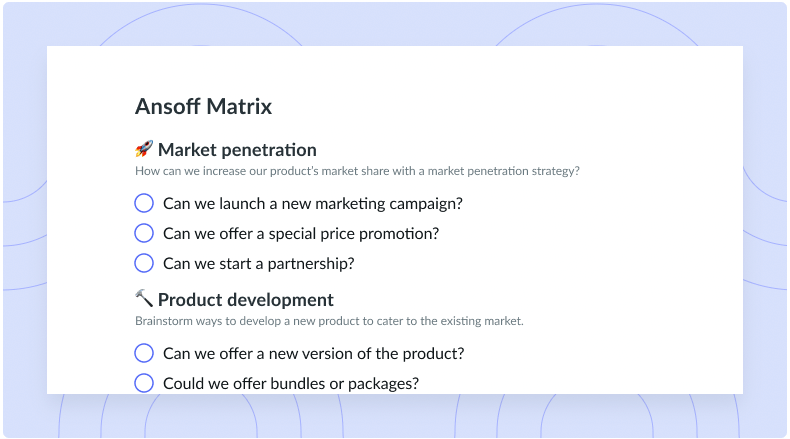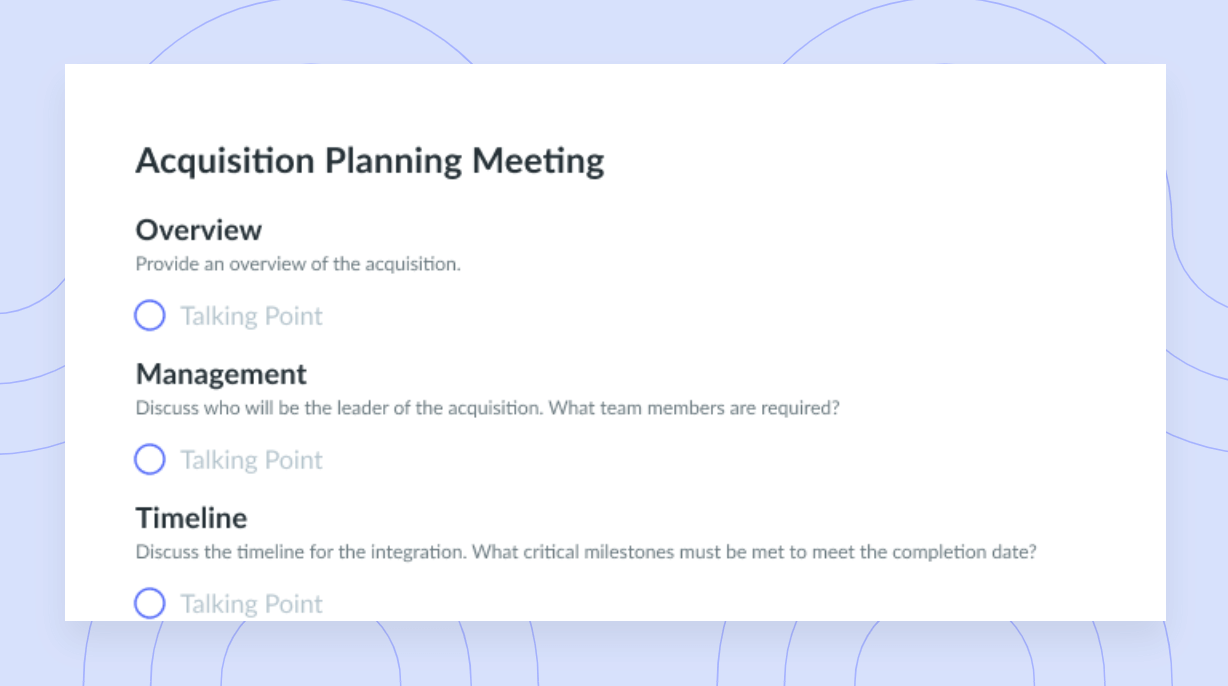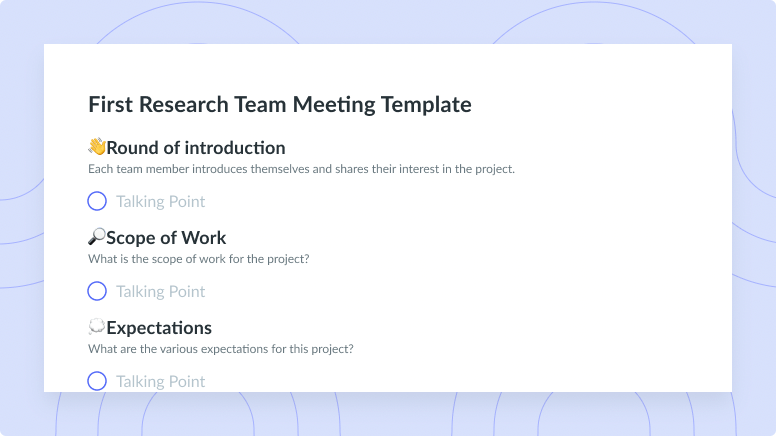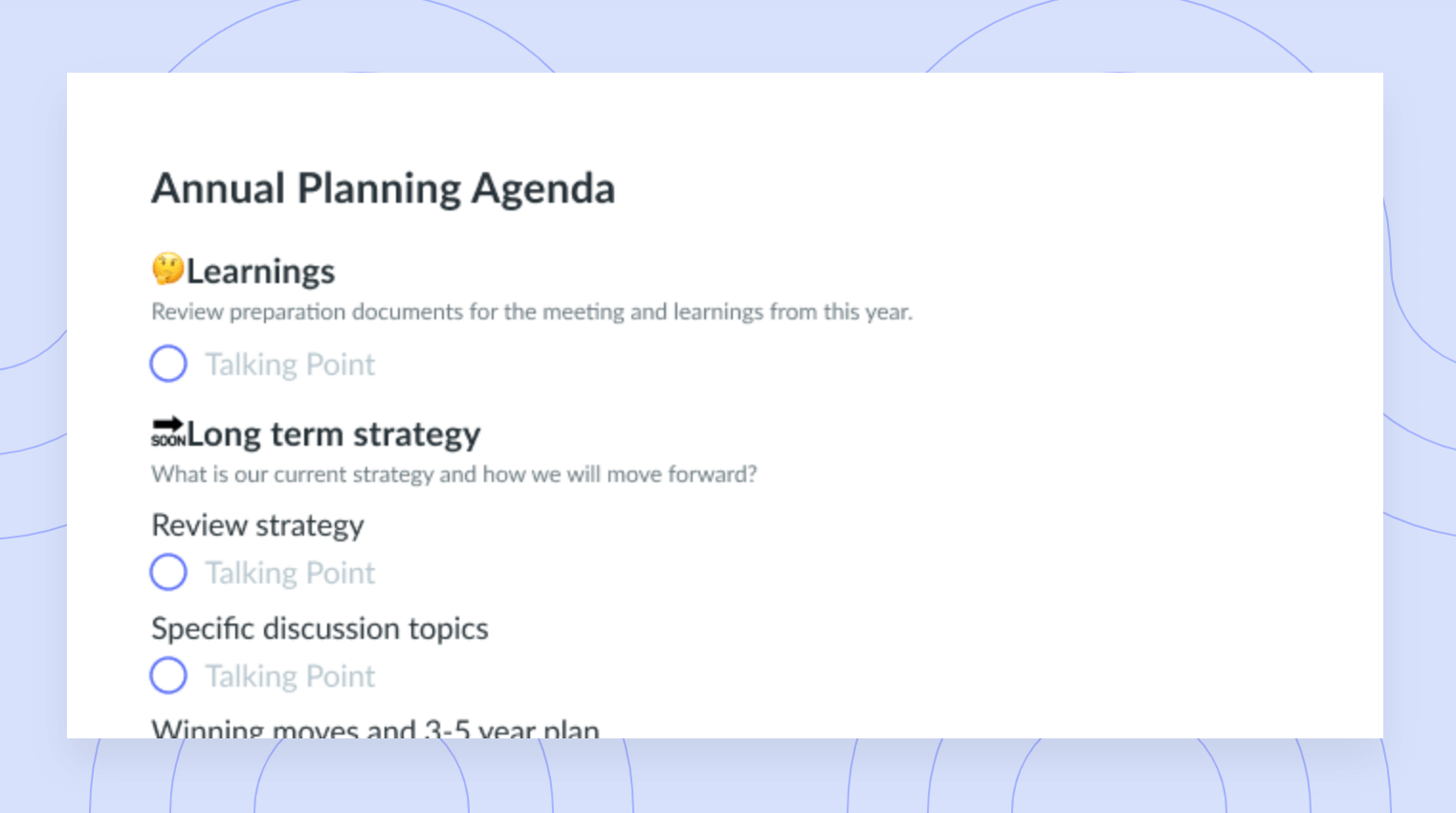Capacity Planning: Key Benefits and Strategies
Capacity planning is a critical process to determine whether your team, resources, and tools are available to meet customer demand.
As organizations have shifted to remote and hybrid work, optimizing resource allocation and streamlining workflows has never been more critical. Below, learn all about capacity planning, the step-by-step process, and proven techniques and tools senior operations leaders can leverage.
- What is capacity planning?
- Capacity planning vs. resource planning
- Benefits of capacity planning
- 3 types of capacity planning
- The best strategies for capacity planning
- The 5-step capacity planning process
- Tools that support capacity planning
What is capacity planning?
Capacity planning is the process of determining how to utilize resources optimally to achieve company goals and keep customers satisfied. It involves figuring out how long something will take, whether certain teams or departments have enough bandwidth for it, and then effectively delegating tasks to ensure projects are completed efficiently and on time.
A handful of processes you probably know well are central to capacity planning. These include:
- Team management
- Time management
- Work management
- Resource management

Streamline capacity planning
with Fellow
Effortlessly assign and track action items across the organization, optimize resource allocation, and streamline workflows for increased productivity. Plus, Fellow seamlessly integrates with 50+ tools for enhanced efficiency and alignment.
Capacity planning vs. resource planning
Capacity planning and management is about whether your people and products are fully available to meet your demand for a project. Resource planning is allocating resources to projects and tasks while ensuring constant access.
Think about it this way: Resource planning is about distributing what’s needed to achieve organizational goals. Capacity planning is about whether your organization can effectively utilize those resources to achieve those goals—and, if not, how you can change that.
Benefits of capacity planning
Capacity planning strategies improve your:
- Short-term projects and long-term planning
- Cost-cutting approaches
- Ability to avoid scope creep
- Team-wide transparency
Short-term projects and long-term planning
Capacity planning is a surefire way to manage a project’s resources properly and provides value for long-term strategic planning. After all, how you manage capacity for current projects is a template for all future ones.
Suppose you figure out during your current project that a certain team member needs three hours for a task and that this task will also be a part of your next project. When you start this new project—or any similar ones—you’ll already know this team member’s capacity, making for better planning.
Cost-cutting approaches
Consider a project for which you’re hiring contractors. Unlike your employees, these contractors charge per hour and don’t have set salaries for their labor. You might wind up spending a lot to work with these contractors if their involvement requires more hours than you initially thought. There’s an easy way to avoid this: Plan for this contractor’s capacity so you don’t overspend.
Ability to avoid scope creep
You know that awful feeling when a project’s number of tasks or deliverables just keeps growing? That’s called scope creep, and capacity planning is the nail in its coffin. You’ll know exactly how available teams are and how your resources will be used. You’re building in guardrails so that, when scope creep happens, you’ll immediately know to set boundaries with clients demanding more work.
Team-wide transparency
Working toward fully transparent team communication is a major management improvement area. If anything, you and your team can always be clearer and more forthright, and capacity planning is a part of this picture. It ensures that everyone knows how available each team member and resource is, leaving no surprises along the way. And a lack of surprises is, of course, the very core of transparency.
3 types of capacity planning
You’ll cover three resources in capacity planning: products, tools, and your workforce.
Product capacity planning
What products and materials will your team need to achieve your goals? This is the question behind product capacity planning. The key is to ensure that you always have enough resources on hand to create the products you sell.
Sometimes, this is as simple as implementing a software platform and keeping everyone fully connected to it. In other cases, you might need to ensure a regular flow of raw materials for building physical products. Either way, successful project capacity planning means that your offerings continue to flow to your clients or customers.
Tool capacity planning
Technically, tool capacity planning is distinct from product capacity planning. However, tool capacity planning involves getting the equipment you need for your projects—and for software-as-a-service (SaaS) organizations, that just means computers and internal software. In other words, tools and products are the same for SaaS teams. If you instead sell physical products, raw materials are also necessary, and those become the focus of tool capacity planning.
Workforce capacity planning
Is your team large enough to deliver on your goals? Does everyone have enough time and expertise to do what’s necessary? These questions guide workforce capacity planning and minimize the chances of team members saying they don’t have enough time as a project’s end date nears. You’ll meet deadlines and protect your team’s time, improving employee performance.
Workforce capacity planning is also how you decide whether to bring on contractors for a project or hire more team members. In this way, workforce capacity planning is also a budget consideration. Can you afford more hands on deck, or do you need to figure out how your current team can do more? Your goal is to improve work performance for your organization without burning anyone out or going over budget.
The best way to figure out these important capacity issues is to meet with key stakeholders and discuss possible ideas or solutions. To help you get started, Fellow’s Human Resources Action Plan Meeting Template has pre-built sections to discuss workforce capacity, forecasting, and strategies to recruit, hire, and retain talent. Plus, it’s completely customizable for your HR team’s needs.
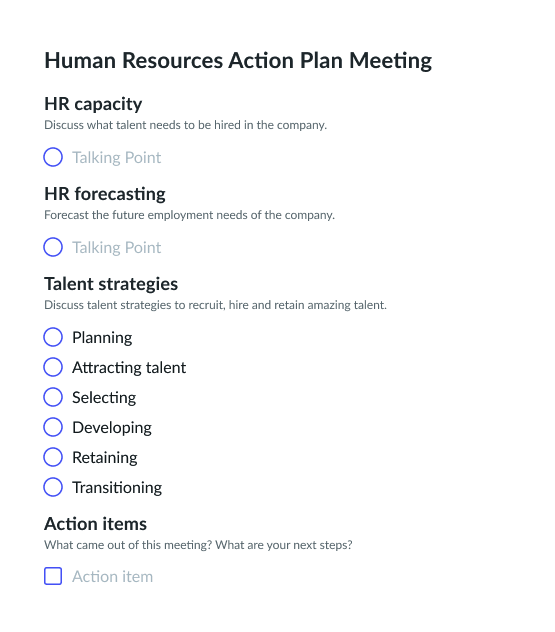
The best strategies for capacity planning
Whether you’re planning for product, tool, or workforce capacity, chances are you’ll use one of these three approaches.
Lag strategy
The lag strategy involves adding capacity only after demand for your offerings increases. Depending on your view, this capacity planning strategy is either the lowest- or highest-risk option.
On one hand, lag keeps your cost low because you only bring on new assets when needed. On the other hand, it can put you well behind rapidly growing demand. This could lead to you losing potential customers and earnings. Of course, this isn’t an issue if your client or customer base and its needs aren’t likely to change—in that case, try the lag strategy.
Lead strategy
This approach is the exact opposite of lag—you’ll add capacity before your demand goes up. You won’t risk not meeting customer demand, but you will risk spending money on resources you don’t need. You’re thus best off relying on lead capacity planning if you expect big-time growth in your customer base or its use of your offerings.
Match strategy
When you change your capacity directly in response to shifts in customer demand, you use the match strategy. This is typically the best way to meet demand while keeping a careful eye on your costs. It’s also a reliable way to keep your organization and team flexible and adaptable. You can probably see, though, that it requires you to pay super close attention to market shifts and react quickly. This makes the match strategy easier in theory than in execution.
The 5-step capacity planning process
The process of capacity planning in operations management typically looks as follows.
- Predict your demand
- Figure out the capacity required
- Determine your current capacity
- Bridge the gap
- Check in and adjust
1Predict your demand
What amount of tasks do you expect certain teams within your organization to face? Answering this question is how you figure out your demand. Greater demand requires more capacity, so when you forecast the former, you see whether it’s time to increase the latter.
2Figure out the capacity required
How many hours of work will go into meeting your demand? The answer is your target workload capacity. Ask similar questions about your products and tools to decide how much capacity each needs.
3Determine your current capacity
It’s one thing to see how much teams are required to do, and it’s another entirely to have the necessary capacity. That’s why it’s so important to determine your current workforce, product, and tool capacity. For example, ask team members how long they think they’ll need for tasks to find your workforce capacity. Keep their answers in mind as you calculate the work hours your project requires.
4Bridge the gap
There will almost always be some distance between your target and actual capacities, and you should bridge this gap. Hire contractors to work on this project or delegate tasks from one team member to another. Consider implementing additional software platforms to help for both this project and future ones.
Notice that all these examples are about making changes that grow your capacity. You can also make adjustments when your capacity outweighs your demand. One way to do this is by pushing your sales team to secure new clients and projects, so your extra capacity doesn’t go unused. As your capacity grows to match your demand, the money your organization spends will likely wind up earning you more money.
5Check in and adjust
A team that started at capacity doesn’t always stay that way. Maybe project tasks are taking more time than expected, or maybe you’ve added too many projects to make up for excess capacity. Always check in on your resources, whether your people or your products, to be sure you’re balancing your needs with your availability. Prioritizing both is the key to success.
Tools that support capacity planning
Unlocking the full potential of capacity planning requires effective and seamless communication and collaboration among team members. That requires comprehensive software or tools that are tailored to senior leaders of fast-growing organizations.
Fellow is the only all-in-one AI management software for remote and hybrid teams that empowers your organization to have fewer, more effective meetings for capacity planning and better resource allocation. You can even sync it across your organization’s workflow with one of Fellow’s 50+ native integrations.
With Fellow’s powerful AI features for recording, transcribing and summarizing meetings, your organization’s leaders can plan and run more effective discussions on capacity planning, drive efficiency with objectives and key results, and stay connected via seamless feedback mechanisms for continuous improvement.
Leaders can also build meeting agendas from a library of 500+ expert-approved meeting templates or let AI do all the work to save you and your organization time. Use Fellow for more efficient capacity planning across the board!

